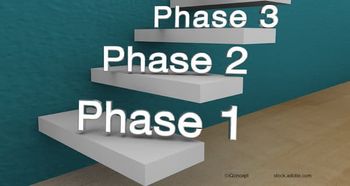
Exonate announces CLEAR-DE trial for EXN407
Exonate initiates a phase 2b trial for EXN407, a groundbreaking eye drop treatment for diabetic retinopathy
Biotech company Exonate Ltd. recently announced the initiation of a phase 2b clinical trial, CLEAR-DE (Clinical Evaluation of a New Eye Drop for Alleviating Retinopathy in Diabetic Eye Disease), for its lead candidate, EXN407.1
CLEAR-DE will evaluate the clinical efficacy, optimal dosing and safety profile of EXN407 for the treatment of patients with non-proliferative diabetic retinopathy (NPDR), the early stage of diabetic eye disease. The study is planned to begin in early 2026, with 140 patients currently enrolled across multiple sites in Australia, the Middle East and China.
The CLEAR-DE phase 2b study follows positive results from the phase 1b/2a study in March 2024, in which EXN407 met the primary safety and tolerability endpoints. With high patient compliance, there were no documented drug-related serious adverse events. Additionally, exploratory efficacy signals showed a reduction in vascular leakage1, which is a key pathological driver in diabetic retinopathy (DR).
“The phase Ib/IIa data demonstrated the clear potential of EXN407 as a non-invasive treatment for diabetic eye disease,” Catherine Beech, MB, ChB, OBE, chief executive officer of Exonate, said in a press release.1
It is estimated that of the nearly 500 million people living with diabetes, one-third of them are affected by NPDR. Current therapies to treat NPDR use monthly intraocular injections, which are initiated only after symptoms appear. Because of this, early therapeutic benefits are limited, and treatment is often deferred until irreversible damage has occurred because the treatments are invasive and frequent.1
Exonate’s new therapy EXN407 is a minimally invasive approach. A twice-daily topical formulation of a selective SRPK1 inhibitor, the drug has the potential to become the first effective eye-drop therapy for NPDR and diabetic macular oedema. EXN407 selectively inhibits the pro-angiogenic isoforms that drive disease progression by modulating expression of vascular endothelial growth factor (VEGF) via alternative mRNA splicing.1
“This therapy could transform the treatment landscape for early-stage disease by providing clinical benefit while avoiding the burden of injections, representing a significant advancement for patients and physicians alike,” Beech said.1 “We’re excited to progress to the CLEAR-DE phase 2b trial and are actively seeking strategic partners to support its execution.”
Reference:
Exonate plans “CLEAR-DE” Phase IIb clinical trial of lead candidate EXN407 for diabetic eye disease. BioSpace. Published July 29, 2025. Accessed July 29, 2025.
https://www.biospace.com/press-releases/exonate-plans-clear-de-phase-iib-clinical-trial-of-lead-candidate-exn407-for-diabetic-eye-disease
Newsletter
Get the essential updates shaping the future of pharma manufacturing and compliance—subscribe today to Pharmaceutical Technology and never miss a breakthrough.







































